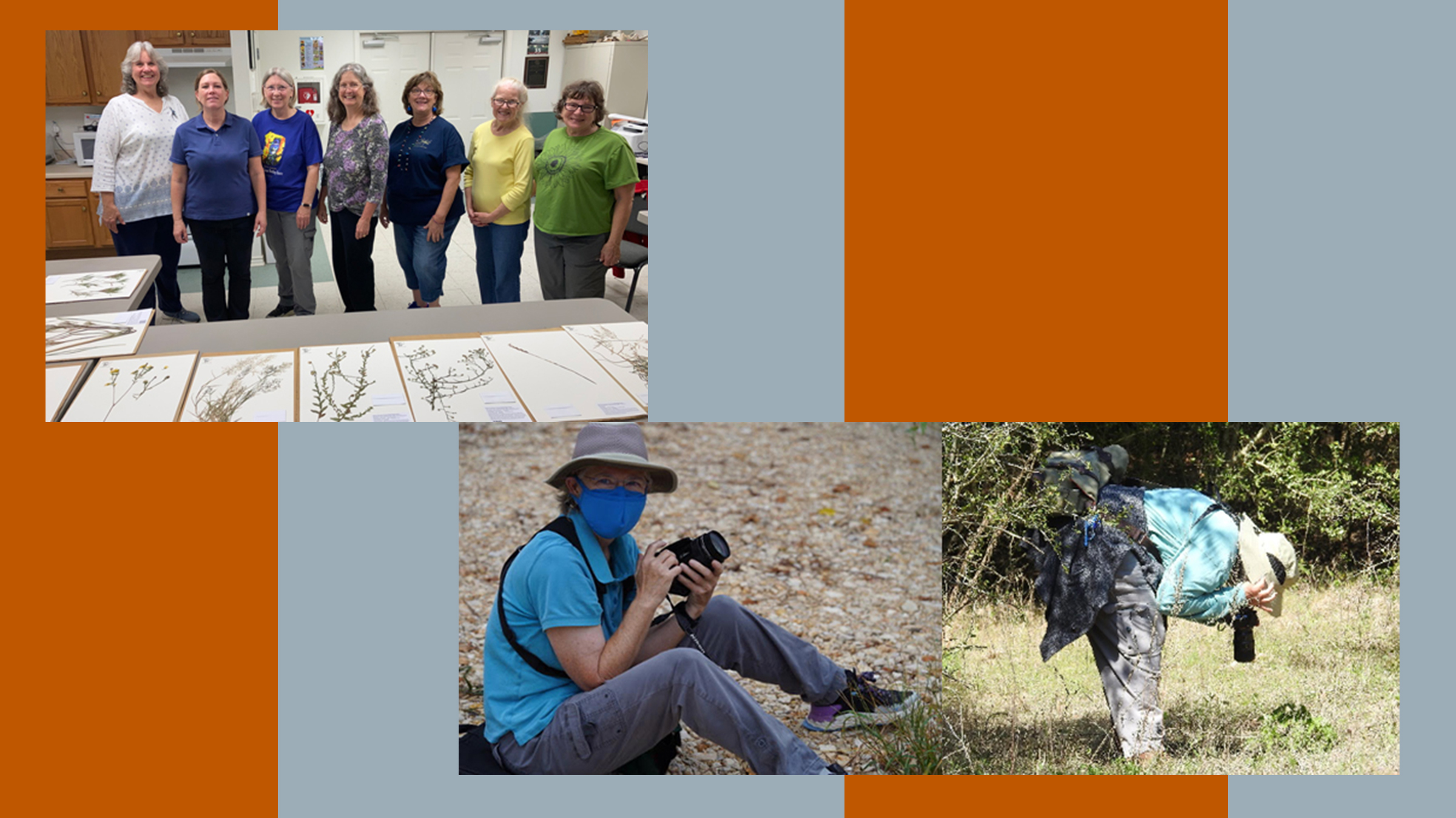
It all started in the fall of 2018. A group of friends were beginning a project to remove invasive and aggressive plants from an old pasture at the Stengl “Lost Pines” Biological Station (SLP). They wanted to identify invasive plants so SLP sought the assistance of a group of plant enthusiasts from the Lost Pines Chapter of Texas Master Naturalists known as the “Biocensations.”
None of us are formally trained botanists. We are an eclectic group of folks from various walks of life. What we all share is an insatiable curiosity about the local flora and an intense drive to learn how to identify and understand the plants we find.
Prior to plant surveys at SLP, we surveyed plants at McKinney Roughs Nature Park near Bastrop for about 5 years. During that time, we had expanded our plant identification skills by attending workshops and classes. Some of us acquired microscopes, cameras, and big, intimidating books like The Illustrated Flora of North Central Texas (FNCT).
By the fall of 2018, we felt confident that we could help identify plants at SLP. While the invasive removal crew worked with their chain saws, loppers and herbicides, we played with our cameras, wildflower books, and loupes. We felt a bit guilty that they were working so hard while we were having so much fun.
We set up a project on iNaturalist entitled: University of Texas Stengl Lost Pines · iNaturalist where we post our photo observations from the field to document our findings (including birds, fungi, insects, etc.). We also began a spreadsheet, adding plants that we identified and updating the original plant list for SLP. However, we were not yet collecting plants.

Kathy McAleese (left) and Kathy Cox (right) photographing plants in the field.
In the fall of 2019, Steven Gibson (Resident Manager at SLP) and Dr. Rob Plowes (Associate Director) hosted a barbeque lunch for all the volunteers. During that lunch, Dr. Plowes mentioned they would love to create an on-site herbarium and to send duplicate specimens to the Billie L. Turner Plant Resources Center, the herbarium at the main campus in Austin. That would allow students to learn about the plants at Stengl and the specimens could also be used for research. With hesitancy, we agreed to assist, but planned to delay collecting until we could meet with George Yatskievych, Curator, from the herbarium so that he could teach us how to collect, press and mount the plants. Then came COVID-19. It was clear it would be months before we could meet as a group with George.
On my own, I began to collect plants in the fall of 2019, taking them home to identify and press. My home office became covered in stacks of cardboard and newspaper. My otherwise idle dumbbells were finally getting a workout, serving as weights for my improvised presses.
Kathy Cox began to collect with me later. Soon other members of the group joined to help us locate and identify plants. Everyone contributed at their own comfort level, expanding their role as they gained confidence.
We were finally able to meet with George Yatskievych and Amber Horning, Assistant Curator, in August of 2021. By that time, we had collected and pressed around eighty plants and they were ready to be mounted. George and Amber brought us supplies and gave us detailed instructions and demonstrations to get us started.
We spent the rest of the summer mounting the plants and turning them into beautiful herbarium vouchers. In the fall, we resumed collecting, pressing and mounting plants.
We started a second iNaturalist project for the herbarium specimens. Plants are photographed in the field before they are collected, documenting flowers, fruits, leaves, stems, and sometimes roots. Photos that show the surrounding vegetation are taken as well. Sometimes photos are taken with the use of a microscope, especially for grasses and sedges to improve the chances of a correct identification.

Louise Ridlon mounting a specimen. Note the QR code on the label that links the the specimen to the iNaturalist observation.
The photos are used to create an iNaturalist observation for each specimen. A written description of the plant and the surroundings is also added to the observation. When we are ready to mount the plants, the data for each specimen is exported from iNaturalist to create a label for the voucher. The label includes a QR code that, when scanned, links the specimen to the corresponding iNaturalist observation. Therefore, in addition to seeing the dried, mounted specimen, the observer can see photos of the living plant, read comments related to the identification, see a map pinpointing the exact location of the original plant on the property, and determine who collected and identified the plant.
iNaturalist is an important tool that we use to document our findings and expand the intellectual resources for the project beyond ourselves. However, we do not depend on it exclusively. We vet every identification independently. It is a constant learning process.
By the end of 2021, our tiny herbarium had grown to around 200 vouchers. In addition, we had added over 200 plant species to the master plant list for SLP. We now understand what it means to “curate” an herbarium. We are having fun, making friends, continually learning about plants, and creating a durable resource for future students and researchers at the SLP. We are profoundly grateful for this opportunity, and for the unwavering and enthusiastic support of Steven Gibson, Dr. Rob Plowes, George Yatskievych and Amber Horning.



